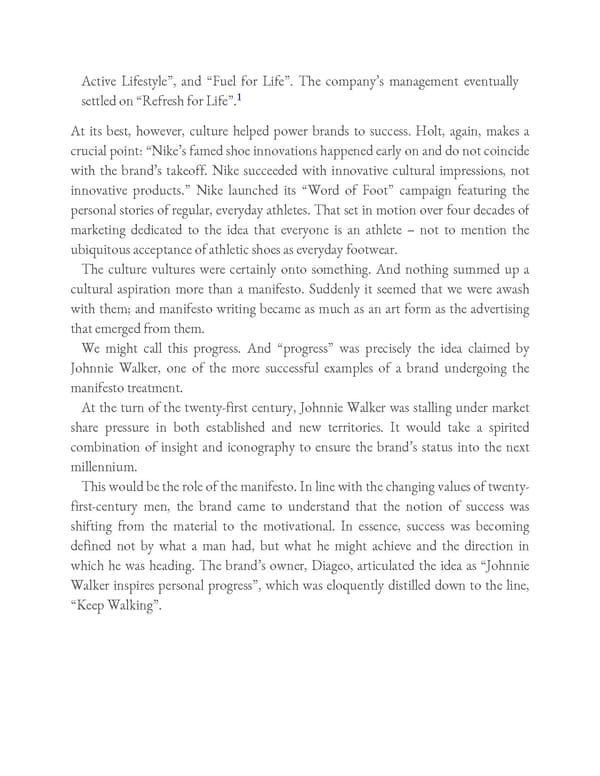Active Lifestyle”, and “Fuel for Life”. The company’s management eventually 1 settled on “Refresh for Life”. At its best, however, culture helped power brands to success. Holt, again, makes a crucial point: “Nike’s famed shoe innovations happened early on and do not coincide with the brand’s takeoff. Nike succeeded with innovative cultural impressions, not innovative products.” Nike launched its “Word of Foot” campaign featuring the personal stories of regular, everyday athletes. That set in motion over four decades of marketing dedicated to the idea that everyone is an athlete – not to mention the ubiquitous acceptance of athletic shoes as everyday footwear. The culture vultures were certainly onto something. And nothing summed up a cultural aspiration more than a manifesto. Suddenly it seemed that we were awash with them; and manifesto writing became as much as an art form as the advertising that emerged from them. We might call this progress. And “progress” was precisely the idea claimed by Johnnie Walker, one of the more successful examples of a brand undergoing the manifesto treatment. At the turn of the twenty-first century, Johnnie Walker was stalling under market share pressure in both established and new territories. It would take a spirited combination of insight and iconography to ensure the brand’s status into the next millennium. This would be the role of the manifesto. In line with the changing values of twenty- first-century men, the brand came to understand that the notion of success was shifting from the material to the motivational. In essence, success was becoming defined not by what a man had, but what he might achieve and the direction in which he was heading. The brand’s owner, Diageo, articulated the idea as “Johnnie Walker inspires personal progress”, which was eloquently distilled down to the line, “Keep Walking”.
 Ogilvy on Advertising in the Digital Age Page 104 Page 106
Ogilvy on Advertising in the Digital Age Page 104 Page 106